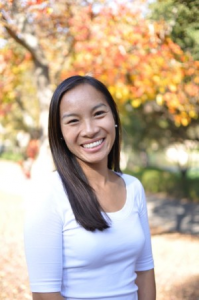 Dr. Ellen Metzger, professor of Geology and Science Education, is a member of the Green Ninja Project, whose goal is building an understanding of Climate Change through improved science education. Last year, the project received a grant to further the production of the “Green Ninja Film Academy” (GENIE) and was reported first in Academic Spotlight
Dr. Ellen Metzger, professor of Geology and Science Education, is a member of the Green Ninja Project, whose goal is building an understanding of Climate Change through improved science education. Last year, the project received a grant to further the production of the “Green Ninja Film Academy” (GENIE) and was reported first in Academic Spotlight
An interdisciplinary research team from San José State has been awarded $1.1 million from the National Science Foundation to design and implement the ‘Green Ninja Film Academy (GENIE),” an intervention that leverages well-established research on motivation to encourage student interest and engagement in the STEM-related field of climate change. The project is aimed at scientifically-undeserved middle school students who will be guided through a structured storytelling and film-making experience that builds competencies in science, engineering design, media technology and communications. During the three-year project, 60 teachers and at least 2,000 students will directly participate in the GENIE project, with additional participation from parents, friends, and teachers who attend the Green Ninja Film Festival. GENIE is also designed around helping teachers prepare to implement the Common Core and Next Generation Science Standards (NGSS) using climate change as a context. The project builds on the established Green Ninja Project, and an SJSU initiative that develops media to inspire student interest in science and the environment. The principal investigators of the NSF grant are SJSU professors Eugene Cordero (Meteorology and Climate Science), David Chai (Animation/Illustration), Ellen Metzger (Geology and Science Education), Grinell Smith (Elementary Education) and Elizabeth Walsh (Meteorology and Climate Science and Science Education). More information about the project can be found at www.greeninja.org.


